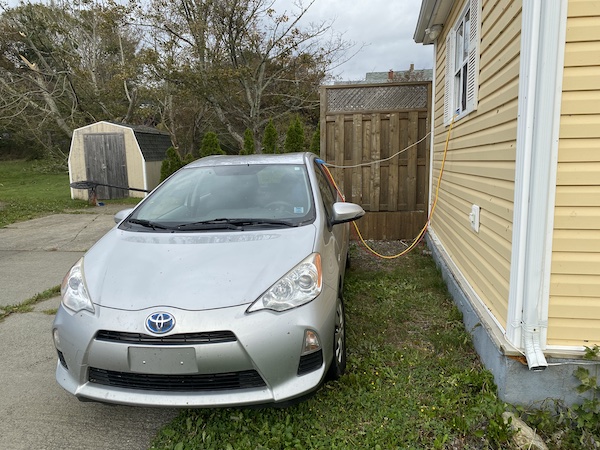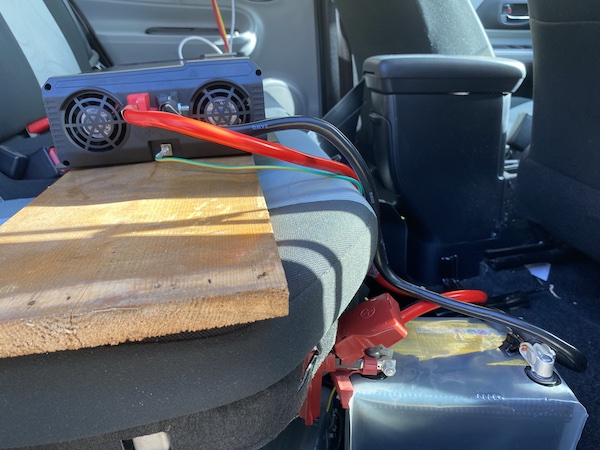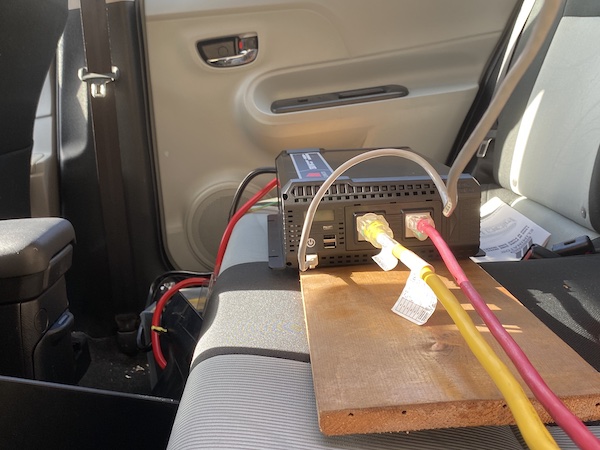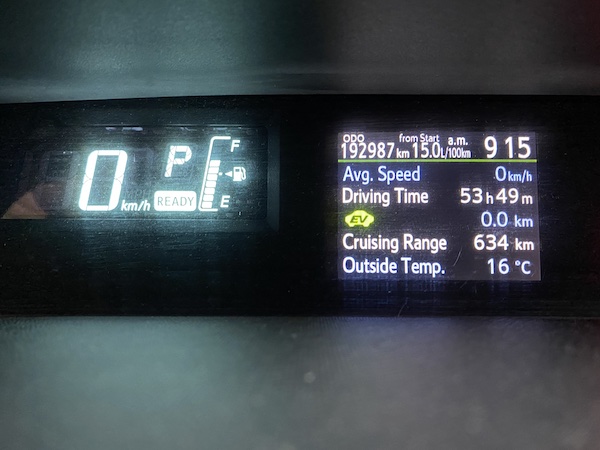Early in the week leading up to Saturday, September 24, 2022 warnings were starting to ramp up about the coming Hurricane Fiona targeting our area.
It looked like a very serious storm.
Having experienced a couple of days without power last winter after an ice storm, I wanted to find a way where we could have power without buying an expensive generator.
About a year and a half ago we bought a used 2014 Toyota Prius so our daughter could get to her summer job 45 minutes away. This to go along with our RAV4 Hybrid we already owned. WIth two hybrids in the yard, surely there was something they could do to help us out if we lost power?
I turned to Google thinking , “Surely someone has done it before.” And sure enough they had. I started to research how I could use our 2014 Toyota Prius to generate power to keep important appliances cold and our sump pump for keeping our basement dry.
I chose the Prius for two reasons. One, it’s smaller engine would use less gas. And two, it’s the older, cheaper vehicle in the yard should I manage to render it useless (which I was pretty sure wouldn’t happen).
After research, I made my way to the local Canadian Tire to pick up a 1500 Watt Inverter and an appropriate extension cord to handle appliances. Both items happened to be on sale (WOO!) and I spent about $450.
I also needed pool noodles (later bought by my wife) to help seal windows to keep the water out. I simply cut them to size, and then cut a slice through them in order to pass the cables through. It wasn’t a perfect seal, but only a minimal amount of water found its way into the backseat only just dampening the cushion. Three cables, two extension cords and one for the remote so I could monitor from inside the house, were run from the back window of the Prius to our kitchen window.
Here’s what it looked like from the outside:


In reality, it’s a fairly simple system. I connect the inverter to the 12v “starter” battery of the Prius, turn the key to the “Ready” position and the battery acts as somewhat of a “bridge” to the hybrid system of the Prius. Once the hybrid high capacity battery drains to a predetermined level chosen by Toyota, the engine kicks in to recharge the hybrid battery.
The trickiest part of the entire setup was finding and getting access to the car battery. For our 2014 Prius it is located under the right rear passenger seat. I had to move the battery out to the floor of the backseat in order to have access to hooking the inverter to the battery. I should also note that the backseat of the Prius is a very tight location to work in. I’m glad I set everything up on two days before while the weather was nice, and I was able to test without working in the middle of a hurricane.
The final setup looked like this as I ran it all from the backseat.



Once set up, I used a 50′ 12-gauge extension cord to alternate between the fridge, freezer and sump pump. There was no strain on the car at all. Aside from the 1000W startup of the fridge and freezer, both drew about 120 watts while running. The sump pump drew 300W while it was in operation.
The second cord was a standard 100′ extension cord that I ran to the living room to a power bar for a lamp, radio and to allow for the charging of phones/devices. The most I saw drawn from the living room at one time was about 25W. So you can see we put absolutely no strain on the 1500W inverter at all.
In the end, we were without power for 4 days. We lost power at 1am Saturday morning, and I started the car at 10am. I made sure all “extra” power draws from the car where turned off (heater, radio, day-time running lights, etc). The car ran for all of it except two hours on Sunday morning, where we could do without power for a while. After that, it rained a few days, so I alternated a lot between the fridge, freezer and sump pump. The car ran for almost 54 hours straight from Sunday morning before power returned to our home Tuesday evening.
The really neat feature with out Prius is that every time I gas the car, I can update the price I paid for fuel and the car calculates how much money I spent. I filled the car in the middle of last week at $1.50 per litre.


As you can see in the above images that I took just before turning the car off for the final time, I used about a third of a tank of gas from Saturday morning until Tuesday evening.The total time the car was “on” and delivering power to the home as 77 hours and 40 minutes. The total cost of gas, $14.44. Which equates to 9.6 litres. Which means we still had enough for probably 4 or 5 more days before getting uncomfortably low on gas.
During the blackout, I spent a good amount of time at the BBQ, cooking food and heating water, and all around I could hear the blast of generators around town, and when our car engine would kick in to charge the battery (just for a minute or two at a time), I could not be sure I was hearing it. I would have to walk off the deck to check to be sure I was hearing the car and not another generator.
Overall I am pleased with how the Prius worked. When we had the blackout last winter, we would sit as a family in the living room around a candle, wondering what we might eat. But with even just the little bit of power this system provided, it was a much more comfortable experience knowing our food was safe, and we had a lamp that could fill the room and allow us to play cards and board games.
As winter approaches in the coming months, there are a few tweaks I might make, and we may look for a low wattage heater, but I know if another significant storm approaches, we’ll be ready.
Overall, the $450 was well worth the peace of mind, but also saving the hundreds of dollars of food we would have lost otherwise. And, we’ll be ready for the next storm.